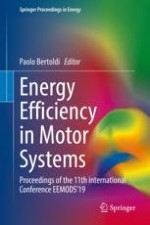Abstract
Digitalization can bring ‘smart’ applications to all kinds of industrial energy systems, of which electric motor-driven systems take the largest part of the industrial electricity use. Electric motor-driven systems (EMDS) are currently responsible for some 53% of global electricity consumption, and approximately 70% of the industrial electricity use (International Energy Agency: World Energy Outlook 2016, IEA Paris, 2016; Digitalization and the future of energy, DNV GL, 2019). An optimal interaction of the respective motor system components (motor control, motor, mechanical equipment and application) combined with digital technologies bring about large energy savings in operation. The ‘addition’ of digital solutions can enlarge the scope of optimization, including efficiencies in operating cost (flexibility, procurement, life cycle), energy, materials (circularity) and emissions.
While it is already possible to seamlessly record energy data from components to enterprise level (MES systems) from the hardware and software side, the next step would be (automated) control of the system based on this analysis. This could be done by using all relevant data (for example, order situation, operating status, product quality and quantity, environmental conditions) in real-time resolution to operate the machines in optimal operating condition.
The IEA 4E EMSA develops activities to conduct impact assessments of technology developments in the field of industrial digitalization. Interest is into identifying the potential impact and possible or needed policy measures to stimulate the development and implementation of digital technologies towards more efficient motor systems in industry. Examples of related digital technologies and products are sensors and big data analysis, decision tools and new testing tools. The application of digital twins and artificial intelligence will enhance energy and motor management and maintenance and systems efficiency strategies. First assessments indicate a significant contribution i.e. an improvement of energy efficiency of 20–25% and an increase of operational efficiency of 25%. The effects towards related policy areas with regard to capacity building, pilots and regulatory issues will be made.
